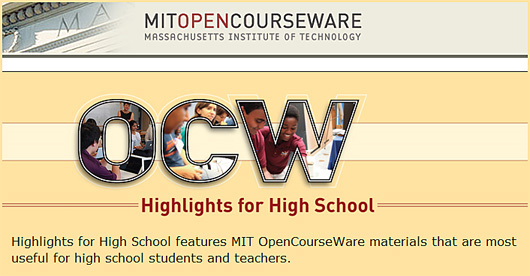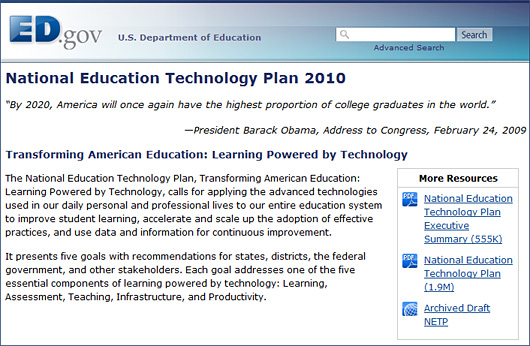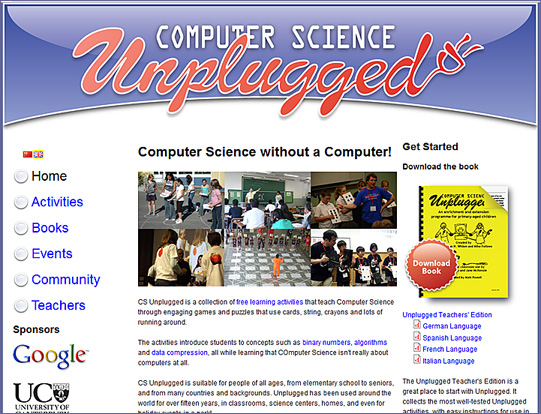Here are the innovative educator’s tips for differentiating instruction:
— from The Innovative Educator’s posting entitled, “Differentiating Instruction is NOT Hard if We Tap into Student’s Passions!“
- Determine your student’s talents, interests, passions, learning styles, and abilities
- Allow students to own the learning
- Allow students to demonstrate learning using the tools they choose
- Allow students to follow their passions when demonstrating learning <– from DSC: I love this one.
The Pivot to Digital Learning: 40 Predictions — from Tom Vander Ark, Partner, Revolution Learning — via EdNet Insights
From DSC:
That posting includes predictions for changes that we’ll see in the next 1, 5 and 10 years…with some excerpts below:
3. Lingering budget woes will cause several districts and charter networks, particularly in California, to flip to a blended model, with a shift to online or computer-based instruction for a portion of the day to boost learning and operating productivity.
9. The instant feedback from content-embedded assessment, especially learning games, simulations, virtual environments, and MMOs (massively multiplayer online games), will be widely used in formal and informal learning and will build persistence and time on task.
10. Adaptive content will result in more time on task (in some cases, two times the productive learning time over the course of a year), and better targeted learning experiences will boost achievement, particularly among low-income and minority students.
11. Comprehensive learner profiles will gather keystroke data from learning platforms, content-embedded applications, as well as after-school, summer school, tutoring, and test prep providers. Students and families will manage privacy using Facebook-like profiles.
12. Most learning platforms will feature a smart recommendation engine, like iTunes Genius, that will build recommended learning playlists for students.
18. All U.S. students will have access to online courses for Advanced Placement, high-level STEM courses, and any foreign language (this should happen next year, but it will take us five years to get out of our own way).
23. Second-generation online learning will replace courseware with adaptive components in a digital content library (objects, lessons, units, and sequences).
27. Most high school students will do most of their learning online and will attend a blended school.
28. More than one-third of all learning professionals will be in roles that do not exist today; more than 10% will be in organizations that do not exist today.
29. The higher ed funding bubble will burst, and free and low-cost higher education alternatives will displace a significant portion of third tier higher education (emphasis DSC).
37. There will be several DIY High options—online high schools with an engaging and intuitive merit badge sequence that will allow students to take ownership of and direct their own learning. They will still benefit from adult assessment, guidance, and mentorship but in a more student-directed fashion.
Panel Calls for Turning Teacher Education ‘Upside Down,’ Centering Curricula around Classroom-Ready Training and Increasing Oversight and Expectations — from ncate.org
Eight States — Calif., Colo., La., Md., N.Y., Ohio, Ore., and Tenn. — Commit To Implementing Teacher-Ed Transformation
WASHINGTON (November 16, 2010) — A national expert panel composed of education experts and critics today called for teacher education to be “turned upside down” by revamping programs to place clinical practice at the center of teacher preparation. This new vision of preparation also will require the development of partnerships with school districts in which teacher education becomes a shared responsibility between P-12 schools and higher education.
Those and other sweeping recommendations are part of a report by the Blue Ribbon Panel on Clinical Preparation and Partnerships for Improved Student Learning, convened by the National Council for Accreditation of Teacher Education (NCATE) to improve student learning.
The new approaches will involve significant policy and procedural changes in both the state higher education and P-12 education systems and entail revamping longstanding policies and practices that are no longer suited to today’s needs. The changes called for will require state higher education officials, governors, and state P-12 commissioner leadership working together to remove policy barriers and create policy supports for the new vision of teacher education.
Also see:
Momentum Builds to Restructure Teacher Education — from edweek.org by Stephen Sawchuk
California Department of Education now on iTunes U — from edweek.org by Canan Tasci
Teachers can now download educational content from the Apple site at no charge
The California Department of Education is following in the footsteps of Texas by launching an official presence on iTunes U, a dedicated area within Apple Inc.’s iTunes store that offers free downloads of lectures, lab demos, and access to educational content from state agencies and nonprofit groups.
With districts and schools under tremendous pressure to make every dollar count, California teachers can now download top-rated content from the site at no charge, said state Superintendent of Public Instruction Jack O’Connell.
[iNACOL] Lessons learned from virtual schools: Experiences & recommendations from the field
GLENDALE, Ariz., Nov. 15, 2010 /PRNewswire-USNewswire/ — The International Association for K-12 Online Learning (iNACOL) announced the release of its first published book: Lessons Learned from Virtual Schools: Experiences and Recommendations from the Field at the annual Virtual School Symposium (VSS) today. The book was edited by Cathy Cavanaugh and Rick Ferdig.
According to Ferdig, “K-12 Virtual Schools are an important part of our 21st century educational system. This book captures the successes and lessons of leaders from some of the most experienced state-led and consortium-based virtual schools in the nation. Readers will get advice and strategies on everything from teacher professional development to data management.”
Five Students, Five Paths to a Future That Works — from Edutopia.org by Kathy Baron
From DSC:
Below are some notes and reflections after reading Visions 2020.2: Student Views on Transforming Education and Training Through Advanced Technologies — by the U.S. Department of Commerce, U.S. Department of Education, and NetDay
Basic Themes
- Digital Devices
- Access to Computers and the Internet
- Intelligent Tutor/Helper
- Ways to Learn and Complete School Work Using Technology
Several recurring words jumped off the page at me, including:
- Voice activation
- A rugged, mobile, lightweight, all-convergent communications and entertainment device
- Online classes
- Interactive textbooks
- Educational games
- 3D virtual history enactments — take me there / time machine
- Intelligent tutors
- Wireless
- 24x7x365 access
- Easy to use
- Digital platforms for collaborating and working with others on schoolwork/homework
- Personalized, optimized learning for each student
- Immersive environments
- Augmented reality
- Interactive
- Multimedia
- Virtual
- Simulations
- Digital diagnostics (i.e. analytics)
- Wireless videoconferencing
Here are some quotes:
Math and reading were often cited specifically as subjects that might benefit from the use of learning technologies. (p. 5)
No concept drew greater interest from the student responders than some sort of an intelligent tutor/helper. Math was the most often mentioned subject for which tutoring help was needed. Many students desired such a tutor or helper for use in school and at home. (p. 17)
…tools, tutors, and other specialists to make it possible to continuously adjust the pace, nature and style of the learning process. (p.27)
So many automated processes have been built in for them: inquiry style, learning style, personalized activity selection, multimedia preferences, physical requirements, and favorite hardware devices. If the student is in research mode, natural dialogue inquiry and social filtering tools configure a working environment for asking questions and validating hypotheses. If students like rich multimedia and are working in astronomy, they automatically are connected to the Sky Server which accesses all the telescopic pictures of the stars, introduces an on-line expert talking about the individual constellations, and pulls up a chatting environment with other students who are looking at the same environment. (p.28)
— Randy Hinrichs | Research Manager for Learning Science and Technology | Microsoft Research Group
From DSC:
As I was thinking about the section on the intelligent tutor/helper…I thought, “You know…this isn’t just for educators. Pastors and youth group leaders out there should take note of what students were asking for here.”
- Help, I need somebody
- Help me with ____
- Many students expressed interest in an “answer machine,” through which a student could pose a specific question and the machine would respond with an answer. <– I thought of online, Christian-based mentors here, available 24x7x365 to help folks along with their spiritual journeys
National Ed Tech Plan puts technology at the heart of education reform — from The Journal.com by David Nagel
United States Secretary of Education Arne Duncan today released the final version of the Obama administration’s National Educational Technology Plan (NETP), a federal policy statement that puts technology at the heart of proposed changes to the way education is delivered in this country.
.
E-Learning industry on the rise — from edweek.org by Constance Gustke
Online-only courses generating revenue
The for-profit e-learning company K12 Inc. grew 40 percent last year, generating $385 million in revenue by providing virtual courses to 70,000 students across the country.
Connections Academy, another such provider, generated about $120 million in revenue serving up online courses to some 20,000 students. And recently, the education technology company Plato Learning announced that it is now offering online Advanced Placement courses, marking the first time the company will do so as part of its courseware for school districts.
Spotlight on Technology in Education — from The Innovation Economy
There were three clear messages that the panelist and the audience of experts discussed:
1) We need a Moore’s law for Education…
2) Mass customization and standardization – Imagine yourself as a 4th grade teacher. On the first day of school, you get 25 students and you have to cover some number of topics and all of the students have to get to grade level by end of the year. Let’s take math and fractions for example, some of those kids will already understand the concept, some students need a bit more practice and others are still struggling with adding numbers and are way behind. Every one of those kids is at a skill different level. As a teacher, do you prepare 25 different lessons or do you just aim for the middle? And you have the same problem with reading, writing, science and social studies not to mention the social and emotional development of the students. You can imagine the complexity and the need for some tools that can help. Here is where customization comes in.
What if you had a system that can assess and track student progress against the learning standards during the day and the teachers, parents and students can see that information. The teacher can then use that information to develop individualized learning plans. Here is where standardization comes in.
In the course of education history, some teacher somewhere has developed a good lesson plan that will help a struggling student understand fractions. The problem is that it rarely leaves that classroom or that school and forget about crossing state boundaries. Using technology we can collect, analyze and asses different teaching resources (videos, software, peer learning, tutoring) that address the specific needs of the students. We can then marry the customized student plan with a standardized learning solution. Note, I am NOT taking the teacher out of the equation, you still need their expertise to assess the solution, what we are really doing is giving teachers more tools and freeing up time to be spent where they can add the most value. This solution is already happening in the math center at School of One in NYC.
3) Value outcomes and not time – The concept is very simple, if you know the material, go on to the next level.
K12 announces acquisition of American Ed Corp — from edReformer by Daily News
K12 Inc. (NYSE: LRN), one of the nation’s largest providers of proprietary curriculum and online school programs for students in kindergarten through high school, announced today the entrance into a definitive agreement, under which K12 will acquire American Education Corporation (AEC), a leading provider of research-based core curriculum instructional software for kindergarten through adult learners.
Christian online school now offering programs for grades K-12 — from PRWeb
Liberty University Online Academy now has the ability to provide their students and schools with Christian centered educational curriculum for grades K-12.
— my thanks to Professor Joel Adams at Calvin College for this resource
Also see:
Exploring Computational Thinking
Google is committed to promoting computational thinking throughout the K-12 curriculum to support student learning and expose everyone to this 21st century skill.
Carnegie Mellon researchers test mobile phone games to teach children — from The Journal by Dian Schaffhauser
Researchers in the United States and China are exploring how games on mobile phones can be used to teach children the Chinese language. The research is coming out of Carnegie Mellon University’s Mobile & Immersive Learning for Literacy in Emerging Economies (MILLEE) Project. The results may help promote the idea of mobile phones as learning devices, especially in rural areas of China.
Computer scientists from Carnegie Mellon; the University of California, Berkeley; and the Chinese Academy of Sciences developed two mobile learning games inspired by traditional Chinese games that emphasize cooperative playing, songs, and handmade objects. The Chinese language is more complex than most because it uses 6,000 characters, each corresponding to a syllable or word. One game, Multimedia Word, has the player recognize and write a Chinese character correctly based on hints such as a sketch or photo. A second game, Drumming Stroke, has a group of players practice writing Chinese characters in turns; participants must write one stroke of the character in the correct order, and then pass the mobile phone to the next player within the beat of a drum.












